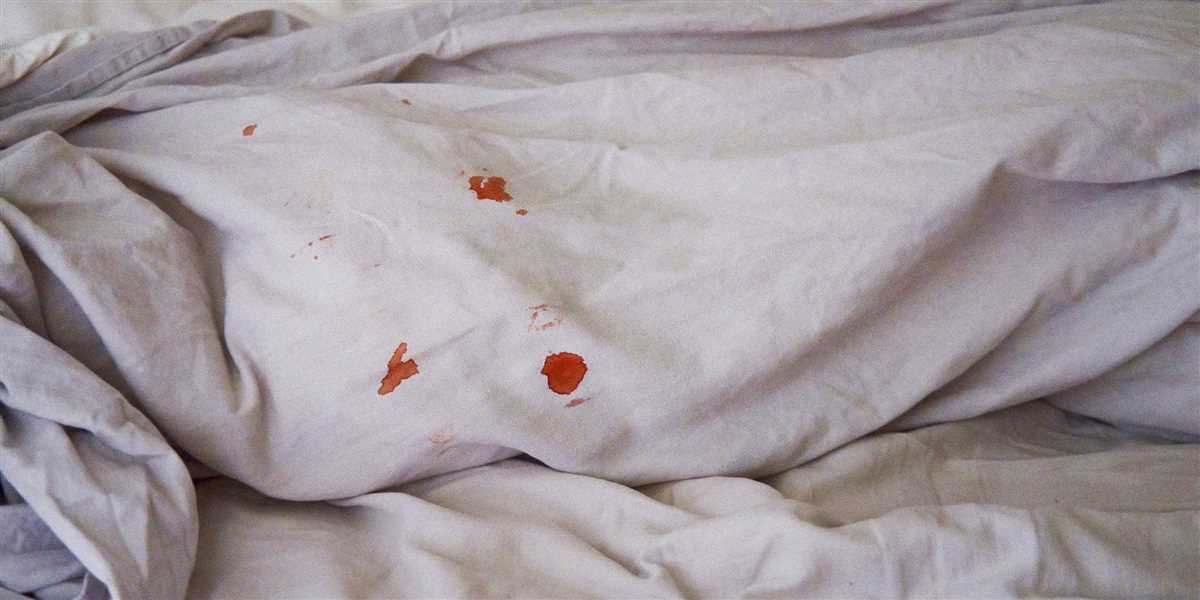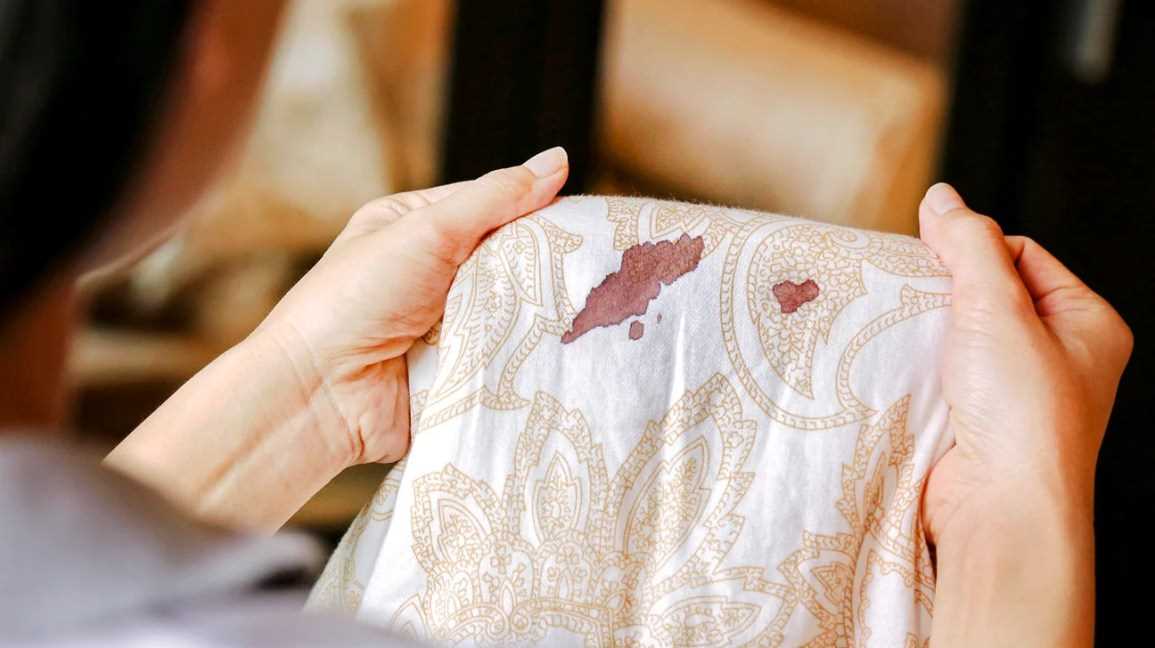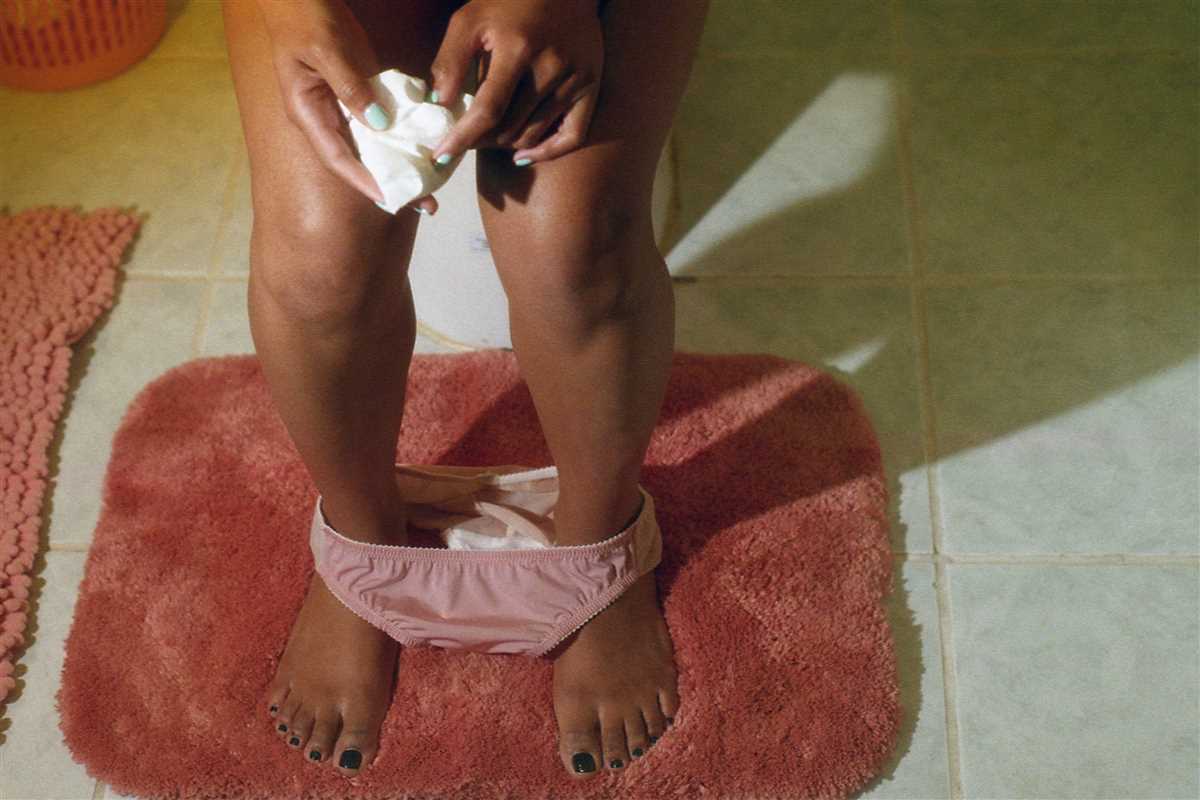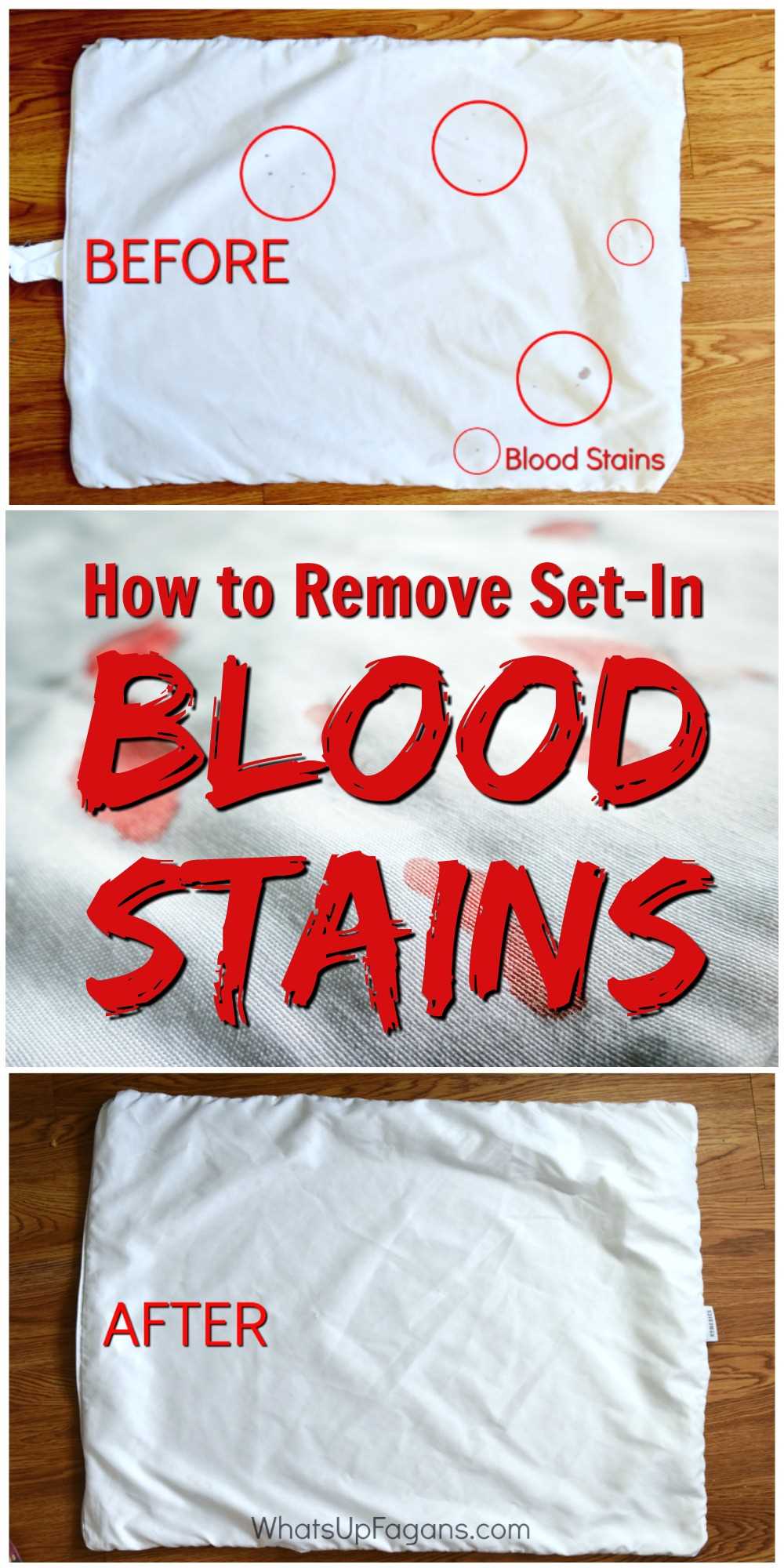




Dealing with period stains on clothes can be frustrating and embarrassing, but there are effective methods to remove them. Whether you’ve experienced a leak or accidental spillage, knowing how to tackle these stains can save your favorite garments. This ultimate guide will provide you with step-by-step instructions on how to remove period stains from clothes.
Step 1: Act quickly
When a period stain occurs, it’s important to act quickly. The longer you wait, the harder it is to remove the stain. Grab a clean cloth or paper towel and gently blot the area to remove any excess blood. Avoid rubbing the stain, as it can cause the blood to set deeper into the fabric.
Step 2: Pre-treat the stain
Before washing the stained garment, it’s crucial to pre-treat the stain. There are several effective options for pre-treating period stains. One method is to soak the garment in cold water for about 30 minutes. Another option is to apply a small amount of enzyme-based detergent or hydrogen peroxide directly to the stain and let it sit for 5-10 minutes. Both methods can help break down the blood and make it easier to remove.
Step 3: Launder the garment
After pre-treating the stain, it’s time to wash the garment. Check the care label to determine the appropriate washing instructions for the fabric. Use cold water and a gentle cycle to prevent further damage to the clothes. If the stain persists after washing, avoid drying the garment, as heat can set the stain. Repeat the pre-treatment and laundering process until the stain is completely gone.
Pro Tip: For stubborn period stains, consider using a stain remover specifically designed for blood stains. Follow the instructions on the product label and test it on a small, hidden area of the garment first to ensure it won’t cause any damage.
By following these steps and being proactive in removing period stains, you can save your clothes and avoid any potential embarrassment. Remember, it’s best to address the stain as soon as possible and to use appropriate stain removal techniques. With a little patience and the right approach, you can successfully remove period stains from your clothes and keep them looking fresh and clean.
Why Period Stains Happen
Period stains can happen to anyone who menstruates. It is a common occurrence and can be caused by a variety of factors. Understanding why period stains happen can help you prevent and treat them effectively.
1. Leakage
One of the main reasons for period stains is leakage. Sometimes, menstrual blood can leak from the pad or tampon, especially if it is not positioned correctly or if it becomes saturated. This can result in stains on your clothes, particularly on lighter-colored fabrics.
2. Overflow
Heavy or prolonged periods can lead to overflow, where the menstrual flow surpasses the absorptive capacity of your chosen period product. This can cause leaks and stains on your clothing, especially if you do not change your pad or tampon frequently enough.
3. Irregular Flow
Period stains can also occur due to an irregular flow. If your menstrual flow suddenly becomes heavier or lighter than usual, it can be challenging to predict and manage, which may result in stains on your clothing.
4. Overnight Stains
Many people experience overnight period stains. When you sleep, you may not be able to check or change your period product as frequently, leading to potential leaks and stains on your sheets or pajamas.
5. Accidents or Mishaps
Accidents or mishaps, such as a tampon string becoming detached or a pad shifting out of place, can also cause period stains. These incidents can happen unexpectedly and result in stains on your clothing.
6. Clothing Choice
Some clothing materials or styles can make period stains more visible or difficult to remove. Light-colored fabrics and tight-fitting garments, for example, can easily show and absorb period stains, making them more challenging to remove.
7. Menstrual Products
The type of menstrual product you use can also affect the likelihood of period stains. Some products offer better absorption and leakage protection than others. Choosing the right product for your flow and activities can help minimize the chances of stains.
Overall, period stains can happen for various reasons, including leakage, overflow, irregular flow, overnight issues, accidents, clothing choices, and menstrual product choices. Taking preventive measures and being prepared with proper period supplies can help minimize the occurrence of stains and make managing your period easier.
Pre-Treatment Options
Removing period stains from clothes can be a daunting task. However, with the right pre-treatment options, you can effectively remove these stubborn stains. Here are a few pre-treatment methods to try:
1. Cold Water

One of the simplest ways to pre-treat period stains is by using cold water. As soon as you notice the stain, rinse the affected area with cold water. This helps to dilute the stain and prevent it from setting.
2. Hydrogen Peroxide

Hydrogen peroxide is a strong stain remover that works well on period stains. Test it on an inconspicuous area of the fabric first to ensure it doesn’t cause any discoloration. If all is well, pour a small amount of hydrogen peroxide onto the stain and let it sit for a few minutes before rinsing with cold water.
3. Salt
Salt is a great pre-treatment option for fresh period stains. Sprinkle a generous amount of salt onto the stain and let it sit for a few minutes. Gently rub the salt into the fabric to help loosen the stain. Rinse with cold water and repeat if necessary.
4. Dish soap
Dish soap is another effective pre-treatment option for period stains. Apply a small amount of dish soap directly onto the stain and gently rub it into the fabric. Let it sit for a few minutes before rinsing with cold water.
5. Enzyme-based stain remover
If the period stain is particularly stubborn, you may want to try an enzyme-based stain remover. These cleaners are specifically designed to break down organic stains like blood. Follow the instructions on the product for best results.
Remember, the key to successfully removing period stains is to act quickly and treat the stain as soon as possible. The longer the stain sits, the harder it will be to remove.
Tips for Removing Period Stains
Dealing with period stains can be frustrating, but with the right techniques, you can successfully remove them from your clothes. Here are some tips to help you get rid of period stains:
1. Act quickly
As soon as you notice a period stain, it’s important to act quickly. The longer the stain sits, the harder it will be to remove. Blot the stain gently with a clean cloth or paper towel to absorb as much blood as possible.
2. Rinse with cold water
After blotting the stain, rinse the clothing with cold water. Cold water helps prevent the blood from setting into the fabric. Avoid using hot water as it can cause the stain to set permanently.
3. Pre-treat the stain

Apply a pre-treatment stain remover or liquid laundry detergent directly to the stain. Gently rub the product into the fabric using your fingers or a soft brush. Allow it to sit for a few minutes to penetrate the stain.
4. Soak the clothing

If the stain is stubborn, consider soaking the clothing in a mixture of cold water and laundry detergent. This can help break down the stain before washing. Follow the instructions on the detergent bottle for the correct amount to use.
5. Wash with enzyme-based detergent
Wash the clothing in the washing machine using an enzyme-based detergent. Enzymes are effective at breaking down protein-based stains like blood. Check the clothing label for any special washing instructions and choose the appropriate wash cycle.
6. Check before drying

Before drying the clothing, check to make sure the stain is fully removed. If it’s still visible, repeat the previous steps or consider using a stain remover specifically designed for tough stains. Heat from the dryer can set the stain, making it even more difficult to remove.
7. Avoid rubbing or scrubbing
When dealing with period stains, it’s important to avoid rubbing or scrubbing the stain. This can cause the stain to spread or set deeper into the fabric. Instead, gently blot and dab at the stain to remove as much blood as possible.
8. Test before using new products
If you’re using a new stain remover or detergent, it’s a good idea to test it on a small, inconspicuous area of the clothing before applying it to the stain. This will help you ensure that it doesn’t cause any damage or discolouration.
By following these tips, you can effectively remove period stains from your clothes and keep them looking fresh and clean.
Choosing the Right Stain Remover

When it comes to removing period stains from clothes, using the right stain remover can make all the difference. Here are a few factors to consider when choosing a stain remover:
- Type of Stain Remover: There are different types of stain removers available, such as liquid, spray, gel, or powder. Consider what type would be most convenient for you to use.
- Ingredients: Look for stain removers that contain enzymes or hydrogen peroxide, as they can effectively break down the proteins in blood stains. Avoid stain removers with bleach, as they can damage colored fabrics.
- Fabric Compatibility: Check the label of the stain remover to ensure it is safe to use on the fabric of your stained garment. Some stain removers may not be suitable for delicate fabrics like silk or wool.
- Scent: If you’re sensitive to strong smells, opt for a stain remover with a mild or fragrance-free formula.
- Effectiveness: Read reviews or look for recommendations to determine how effective a stain remover is at removing period stains. Test it on a small, inconspicuous area of the fabric first to ensure it won’t cause any damage.
Remember, it’s always a good idea to keep a stain remover on hand for emergencies. By choosing the right stain remover and acting quickly, you can increase your chances of successfully removing period stains.
Preventing Future Stains

While it’s great to know how to remove period stains, it’s even better to prevent them from happening in the first place. Here are some tips to help you prevent future stains:
- Use protection: Make sure to wear a reliable menstrual product that suits your flow. The better the product, the less likely you’ll experience leaks and stains.
- Change regularly: Avoid wearing the same pad or tampon for too long, as this increases the risk of leaks. Change your menstrual product frequently, especially on heavy flow days.
- Double up: If you have a heavy flow or are concerned about leaks, consider using two forms of protection, such as a tampon and a pad, or a menstrual cup and a pad.
- Be prepared: Always have spare menstrual products with you in case of emergencies. Keep some in your bag, purse, or car, so you’re ready for unexpected leaks.
- Wear darker-colored clothing: Dark colors tend to hide stains better than lighter colors. Opt for black, navy, or other dark-colored bottoms to minimize the visibility of any potential stains.
- Use stain-resistant fabrics: Consider wearing clothing made from fabrics that are more resistant to staining, such as polyester or nylon, instead of lighter fabrics like cotton.
- Invest in period underwear: Period underwear is designed to absorb moisture and prevent leaks. Consider using period underwear as an additional layer of protection during your period.
- Keep a stain remover on hand: Stash a small stain remover pen or spray in your bag or at home to address any stains promptly. This can help prevent them from setting in and becoming more difficult to remove later.
By following these tips, you can reduce the chances of experiencing period stains and ensure that your clothes stay clean and stain-free.
FAQ
What are some effective methods for removing period stains from clothes?
There are several effective methods for removing period stains from clothes. One method is to rinse the stain with cold water and then apply a liquid detergent directly to the stain. Gently rub the fabric together to help work the detergent into the stain, then rinse it out with cold water. Another method is to soak the stained garment in cold water with a stain remover or laundry detergent for at least 30 minutes before washing it as usual. You can also try using hydrogen peroxide or lemon juice to remove the stain.
Can I use hot water to remove period stains from clothes?
No, it’s not recommended to use hot water to remove period stains from clothes. Hot water can actually set the stain and make it more difficult to remove. It’s best to use cold water when rinsing or soaking the stained garment to prevent the stain from setting.
What if the period stain is already dry?
If the period stain is already dry, you can still try to remove it. Start by scraping off any dried blood using a dull knife or a spoon. Then, apply a stain remover or liquid detergent directly to the stain and let it sit for a few minutes. Gently rub the fabric together to work the detergent into the stain, then rinse it out with cold water. If the stain persists, you can try soaking the garment in cold water with a stain remover or laundry detergent before washing it as usual.
Are there any home remedies for removing period stains from clothes?
Yes, there are some home remedies that can help remove period stains from clothes. One home remedy is to mix equal parts of hydrogen peroxide and cold water, then soak the stained garment in the mixture for about 30 minutes before washing it as usual. Another home remedy is to apply lemon juice directly to the stain and let it sit for a few minutes before rinsing it out with cold water. It’s important to note that not all home remedies may work for every type of fabric, so it’s always best to test a small, hidden area of the fabric before applying any home remedy to the stain.
What should I do if the period stain doesn’t come out?
If the period stain doesn’t come out after trying the methods mentioned above, you can try using a commercial stain remover or taking the garment to a professional cleaner. Some stubborn stains may require professional treatment to fully remove. It’s also important to treat the stain as soon as possible, as older stains may be more difficult to remove.













